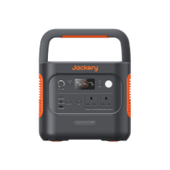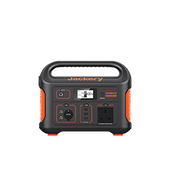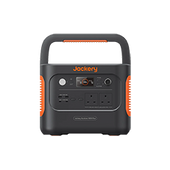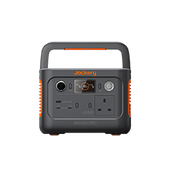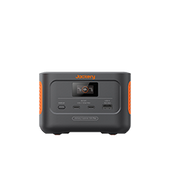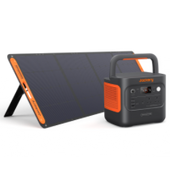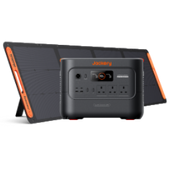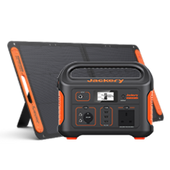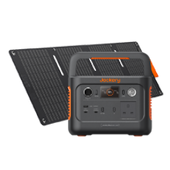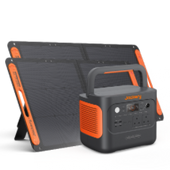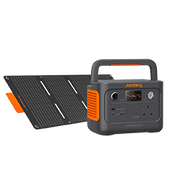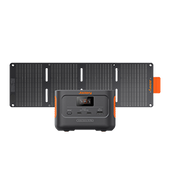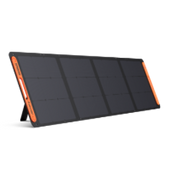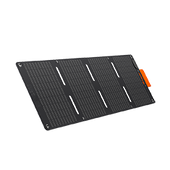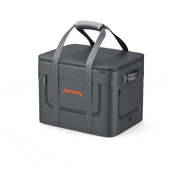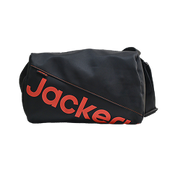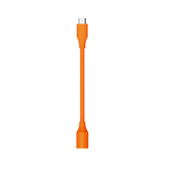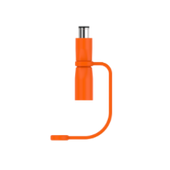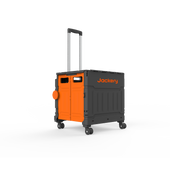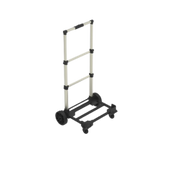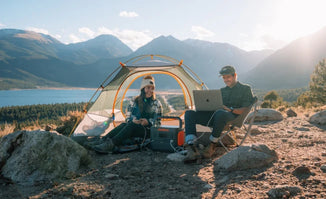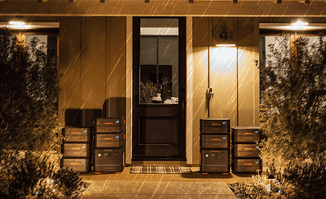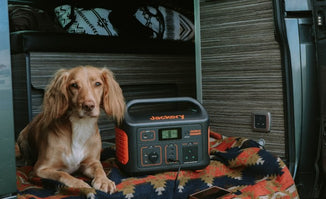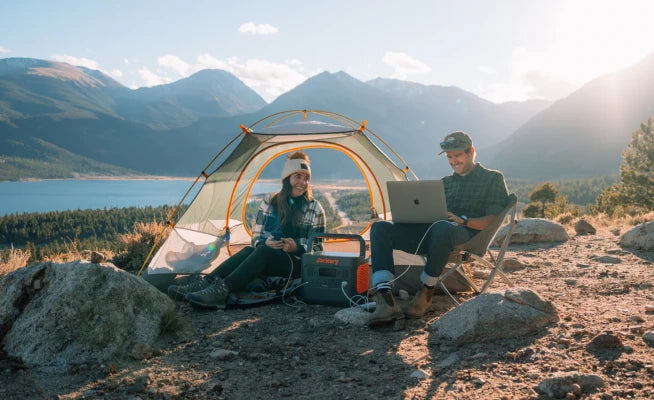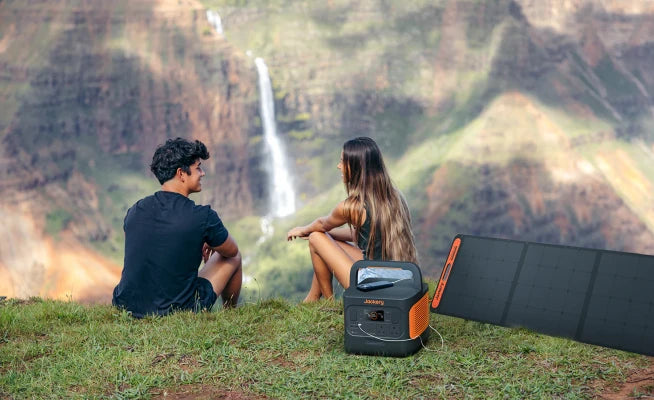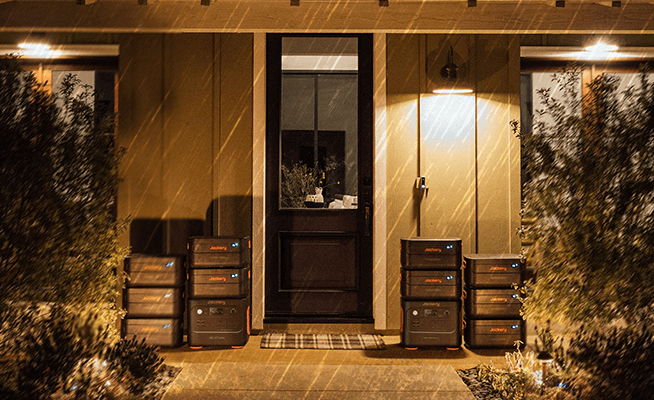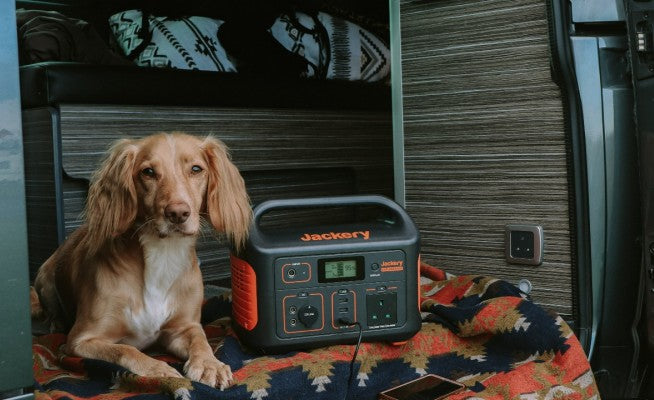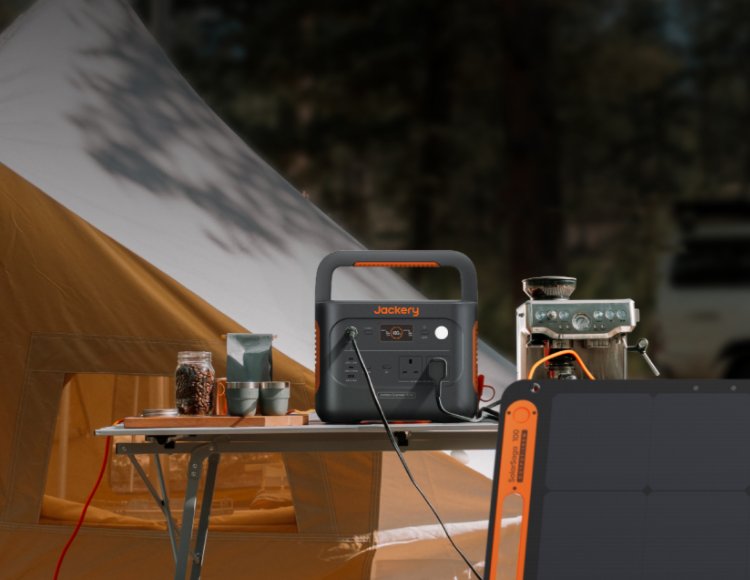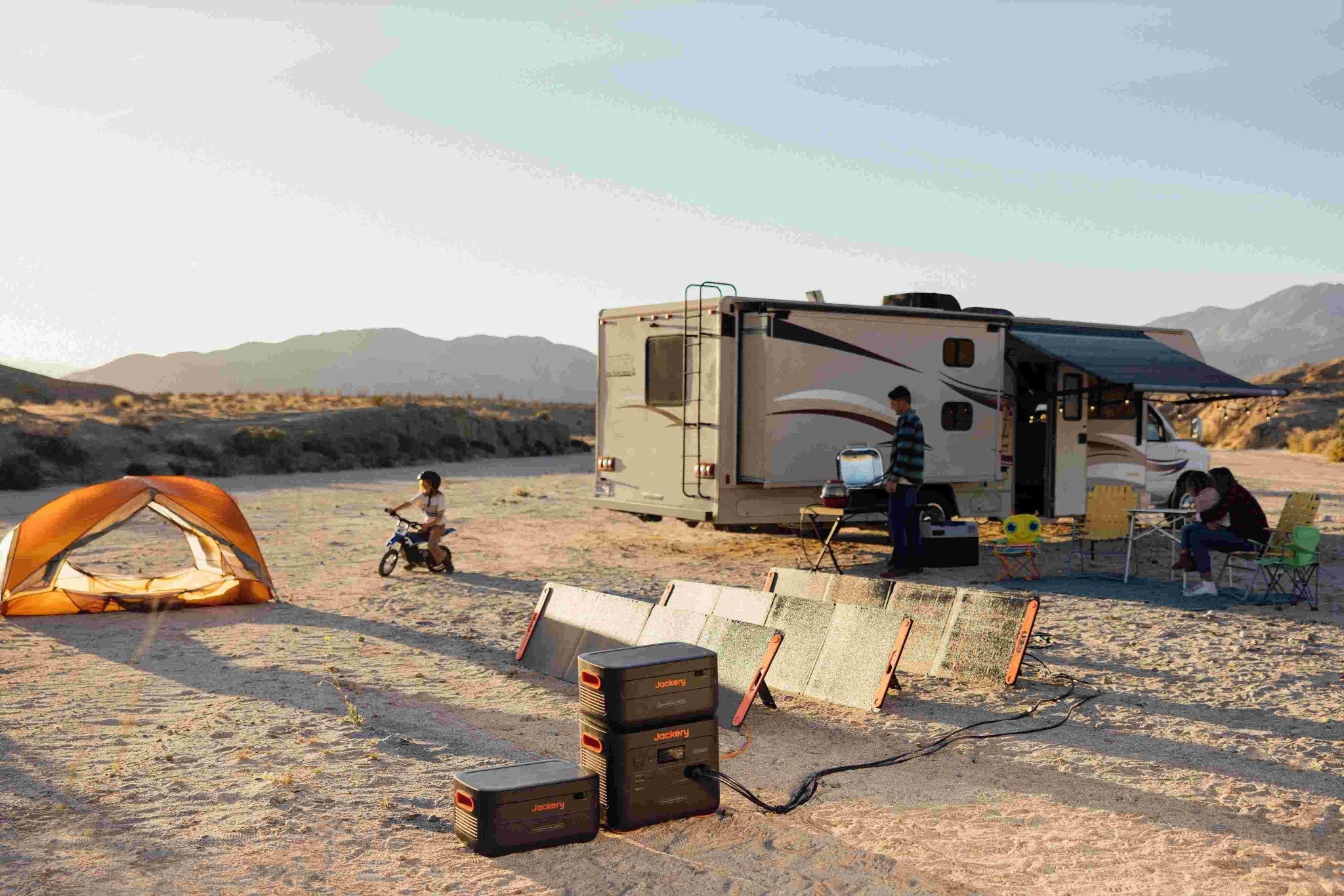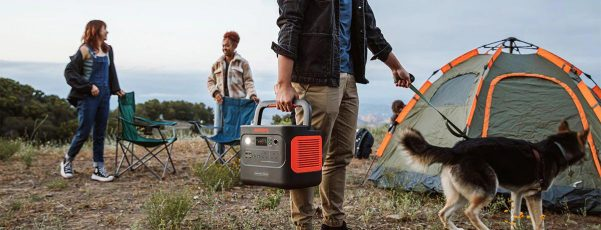Scotland is one of the most incredible places in the world for motorcycle touring because of its breathtaking scenery, meandering roads, and vibrant culture. Regardless of riding expertise, there is a certain sense of freedom and adventure that comes with riding a motorcycle in Scotland. Every route has beautiful views and life-changing experiences, from the famous North Coast 500 to the lesser-known ones in the Highlands.
This book has everything you need to know to plan your vacation, from the best routes and times to ride to what to bring and local laws. Get ready for a once-in-a-lifetime trip through Scotland's beautiful landscapes.
The Jackery Portable Power Station is another great option. It's a portable power source made to charge electronics and devices while you're riding your motorbike in Scotland.
|
Key Takeaways: |
|
● The North Coast 500 and A82 Loch Lomond to Fort William route are excellent motorcycle rides with manageable distances. ● The best time to visit Scotland is between May and September due to favourable weather and extended daylight hours. ● Understanding local laws, such as riding on the left side of the road and adhering to speed limits, is essential for safety. ● Motorcycle-friendly lodgings with secure parking and drying facilities improve the touring experience. ● We highly recommend the Jackery Explorer 300 Plus and 240 v2 portable power stations to power electronics and devices on the go in case of an emergency. |
Why Touring Scotland on a Motorcycle is the Ride of a Lifetime?
Few places on Earth can match Scotland's combination of magnificent landscape, tough roads, and a sense of wild independence. Riding a motorcycle around Scotland offers an exciting and spiritual experience, whether you're chasing the coastal winds, traversing the highland passes, or simply taking in centuries of history at every step. For any dedicated rider looking for a closer bond with both environment and machinery, it's more than just a road trip—it's a rite of passage.
What Makes Scotland a World-Class Motorcycle Touring Destination?
There is a special sense of freedom that comes with riding a motorbike across Scotland that is hard to find anywhere else. Many people consider Scotland one of the most fascinating places in the world for a motorbike tour. The roads are broad, the scenery is lovely, and the weather changes frequently, making every ride interesting. There are miles of winding roads that hug lochs, climb rugged mountain passes, and cut through untouched countryside, giving you stunning views at every turn.
Scotland's varied landscapes, which are all adjacent to each other, make it a great place to ride a motorbike. From the windswept shores of the North Coast 500 to the peaceful lochs and forest paths of the Trossachs, each route feels like a carefully designed experience of nature at its best.
Is It Just About the Scenery?
Scotland's beautiful and varied landscapes are a significant draw, but what really sets it apart is the combination of excellent roads, low traffic outside of cities, and a strong biking culture. The ride quality is still great whether you're driving over the Cairngorms' wide, flowing curves or making tighter turns in Glen Coe. Furthermore, Scotland's modest size allows you to see multiple landscapes in a single day without having to travel large distances on the highway.
You'll also discover lots of motorcycle-friendly lodgings, welcoming taverns, and biker rest spots along the way, many of which are specifically created for two-wheel travellers. There's a sense of community and adventure on the road, and you're never far from a fellow rider or a local with a story to tell.
What's the Best Time to Go?
Scotland's riding season typically lasts from late April to early October, with May and September being particularly suitable for milder weather, fewer midges, and less traffic. While the weather might be unpredictable, most riders believe that the reward for clear-sky moments riding along a misty loch or under a fiery sunset is worth every drop of rain.
Will the Challenge Match the Beauty?
A motorbike tour around Scotland is more than just a beautiful excursion; it's an adventure. The roads can be challenging to drive on due to their varied surfaces, tight corners, and changing weather conditions, but that's all part of the enjoyment. This is why Scotland is a must-see for riders who want more than simply a peaceful getaway. It's a place where every time you turn the throttle, you see something new, and every drive seems spectacular.
Top Motorcycle Routes in Scotland
Scotland is renowned for its stunning scenery and winding roads, making it an ideal destination for motorcyclists to visit. These routes are ideal for biking, offering a range of experiences from seaside views to rough mountain crossings and historical sites. Here are some of the top motorcycling routes in Scotland, along with their starting and ending spots and total distance.

1. North Coast 500
From: Inverness
To: Inverness (loop)
Length: Approximately 516 miles
The North Coast 500, often referred to as Scotland's Route 66, is a stunning 516-mile round-trip route that showcases the wild beauty of the Highlands. It starts and ends in Inverness and goes through rough beaches, empty glens and hard routes like the Bealach na Bà pass, which has hairpin curves like those in the Alps. The course runs via stunning coastal cliffs near John o'Groats and magnificent beaches in Durness. This ride is frequently described as one of the most thrilling and scenic in the UK.
2. West Coast Route
From: Glasgow
To: Applecross
Length: Approximately 270 miles
The West Coast Route begins in Glasgow and spans approximately 270 miles to Applecross, passing through some of Scotland's most spectacular scenery. Riders enjoy the tranquil serenity of Loch Lomond, the spectacular highlands of Glencoe, and Fort William, an outdoor activity hub near Ben Nevis. The tour also involves a visit to the famed Eilean Donan Castle before facing the exhilarating hairpins of Bealach na Bà. The combination of coastal scenery, mountain roads, and historic stops makes it a favourite among many cyclists.
3. Cairngorms Loop
From: Pitlochry
To: Ballater and back to Pitlochry
Length: Approximately 160 miles
This 160-mile loop takes cyclists through the heart of the Cairngorms National Park, beginning in Pitlochry and circling to Ballater before returning to Pitlochry. It has nice roads with scenic forested hills and moorlands. Riders frequently see animals such as red deer and golden eagles along the road. The stretch between Tomintoul and Cock Bridge is very popular because of its flowing turns and undulating hills. The route's leisurely pace and natural splendour make it ideal for individuals who want to mix biking, nature, and heritage.
4. Borders Historic Route
From: Carlisle
To: Edinburgh
Length: Approximately 95 miles
The Borders Historic Route is a more leisurely trip that takes you through a lot of history and culture. It goes 95 miles from Carlisle to Edinburgh. It goes through the Scottish Borders' rolling hills and market towns, including Selkirk and Hawick. Riders can see old castles, abbeys, and peaceful valleys along this route, which is a great way to combine beautiful riding with cultural activities.
5. Isle of Skye Loop
From: Kyle of Lochalsh
To: Kyle of Lochalsh (circular route)
Length: Approximately 100 miles
This 100-mile circle route on the Isle of Skye begins and ends in Kyle of Lochalsh and takes you through some of Scotland's most stunning and mystical scenery. The trip takes you through the lovely town of Portree, the rugged cliffs and sea stacks of the Quiraing, and the old Dunvegan Castle. Despite some small and twisting roads, the stunning mountain and sea views make this route a must-see for any motorbike traveller in Scotland.
6. Argyll Coastal Route
From: Tarbet
To: Fort William
Length: Approximately 129 miles
This 129-mile journey begins in Tarbet and ends in Fort William, winding along Scotland's lovely west coast. It takes riders past the mediaeval town of Inveraray, with its stunning castle, the lively harbour town of Oban, and lastly, Fort William, the gateway to Ben Nevis. The route combines tranquil seaside roads with mountain views, making it ideal for bikers seeking a diverse and relaxing journey.
7. East Coast and Royal Deeside Route
From: Aberdeen
To: Dundee
Length: Approximately 80 miles
This 80-mile route begins in Aberdeen and travels south to Dundee along Scotland's picturesque east coast. Riders love visits to historic locations such as Dunnottar Castle, built on cliffs overlooking the sea near Stonehaven, and the ruins of Arbroath Abbey. The calm seaside roads are suitable for bikers seeking a more leisurely pace with ample sightseeing opportunities.
When Is the Best Time for Motorcycle Touring in Scotland
Choosing the proper time to travel to Scotland on a motorbike can mean the difference between a fantastic vacation and a tough one. Scotland's weather is notoriously unpredictable, but recognising the seasons and local circumstances can help you plan the perfect ride.
When is the Best Season to Ride in Scotland?
The optimum months for a motorbike tour in Scotland are typically late spring and early autumn, from May to September. During these months, the weather is milder and more stable, with longer daylight hours – ideal for safely travelling picturesque routes and enjoying the scenery.
May and June bring stunning springtime scenery, with blossoming wildflowers and greener landscapes, whilst July and August deliver higher temperatures and the most consistent weather, though rain is still possible. September is also a wonderful time to visit, as it usually is quieter with fewer people and features crisp, clear days.
What About the Weather Challenges?
Scottish weather may be unpredictable even in the summer. Riders should always be prepared for sudden rain and temperature drops, especially in the Highlands, where the weather can change rapidly. It is best to wear layers and bring waterproof gear to stay warm and comfortable.
From October to April, the weather is usually too cold, the days are shorter, and there is a higher chance of ice and snow on mountain passes, making motorcycling touring an unwise idea. However, if you're an experienced rider looking for privacy and a unique winter landscape, certain roads are still open, but you need to be careful.
Are There Any Special Events or Times to Consider?
Planning your journey around local events might provide you with a one-of-a-kind cultural experience. For example, throughout the summer, the Isle of Skye and Highlands hold a variety of motorbike rallies and festivals, which can be fun to visit but also cause traffic congestion.
Keep in mind that popular routes, such as the North Coast 500, can become congested during the peak summer months. Scheduling your ride for May, June, or September will help you avoid excessive traffic and provide a more relaxing experience.
What to Bring When Touring Scotland on a Motorcycle?
A motorcycle tour in Scotland offers breathtaking scenery and unforgettable encounters. However, the country's unpredictable weather and distant locations need careful planning. Packing the correct gear ensures that your journey is safe, comfortable, and enjoyable. The following is a complete list of required equipment for your Scottish motorbike adventure.

A properly fitted, approved helmet is essential for safety and is legally required in the UK. Full-face helmets offer the most total protection for the skull, jaw, and face.
To defend against impacts, consider purchasing a motorbike jacket and trousers with CE-approved armour. Waterproof and breathable materials are ideal for coping with Scotland's ever-changing weather conditions.
Layered Clothing
Scotland's climate can vary rapidly, so wearing layered clothing is essential. Start with moisture-wicking base layers to keep sweat away from your body. Add insulating mid-layers for warmth, then finish with a waterproof outer layer to protect against the rain. Riders can adjust to different situations by packing layers, which is important because the weather in Scotland changes quickly.
Navigational and Communication Tools
GPS devices and smartphone apps are helpful, but they may not always function reliably in remote regions. Carrying a real map ensures that you can navigate without relying on electronic devices. Helmet intercom devices facilitate communication between riders and can be connected to GPS for navigation guidance. To avoid becoming disoriented, always have a backup navigation plan in place.
Toolkit and Puncture Repair Kit
A compact toolkit is essential for addressing minor mechanical issues on the road. Include important tools such as screwdrivers, pliers and a tyre pressure gauge. A puncture repair kit might help you avoid being stuck due to a flat tyre. Regular maintenance inspections, both before and during the journey, can help prevent many common problems.
First Aid Kit
Accidents can happen; therefore, having a first aid kit is essential. Pack bandages, antiseptic wipes, pain relievers, and any personal meds. To protect the kit's contents, store it in a waterproof container. Being prepared can make a big difference during an emergency.
Dry Bags and Luggage Accessories
Keeping your stuff dry is critical in Scotland's damp environment. Dry bags keep your gear safe from Scotland's frequent rain and road spray. To keep luggage safe on your motorcycle, use bungee cords or cargo nets. Organise items such that commonly used equipment is readily available.
Portable Power Station: Jackery Explorer 300 Plus
For extended journeys, the Jackery Explorer 300 Plus provides dependable power on the road. It has a capacity of 288Wh and a power output of 300W, enabling it to charge multiple devices simultaneously. Weighing only 3.75 kg, it's easy to transport in a pannier or backpack. The built-in Pure Sine Wave inverter protects sensitive equipment during charging.
Lightweight Backup: Jackery Explorer 240 v2
For shorter excursions or simple installations, the Jackery Explorer 240 V2 is a good option. This unit has a capacity of 256Wh and a power output of 240W, making it ideal for charging cellphones, battery packs, or even a little air pump. It weighs only 3 kg, and its compact design makes it easy to transport. With a quick 2-hour recharge from a wall outlet, it's a dependable and portable solution for any touring arrangement.
Other Handy Additions
Bring many charging cables and UK-compatible adapters for your devices. A reusable water bottle or hydration pack can help you stay energised throughout lengthy rides. When camping, bring lightweight gear, such as a tiny tent or bivvy sack. A notepad or digital journal might be useful for documenting your travels and unforgettable encounters.

Jackery Portable Power Station for Motorcycle Tours
Motorcycle touring in Scotland is an incredible experience, offering stunning landscapes, winding roads, and a sense of freedom. A Jackery Portable Power Station can significantly enhance this trip by providing reliable power in a variety of situations.
If you plan on wild camping (where permitted) or staying at basic campsites without electrical hookups, a Jackery is invaluable. It provides silent, emission-free power for your essentials, allowing you to enjoy the wilderness without the noise of a generator.
Your phone is your primary communication device, camera, and often your GPS. Keeping it charged is crucial for navigation, emergencies, and staying in touch. A Jackery ensures you're never without power.
Jackery Explorer 300 Plus
For motorcycle touring in Scotland, the Jackery Explorer 300 Plus is an excellent choice, as it strikes a sweet spot between portability and practical power capacity for touring riders.

Highly Portable: At just 8.27 lbs (3.75 kg) and compact dimensions (approx. 9.1" x 6.1" x 6.6"), the 300 Plus is one of Jackery's most travel-friendly LiFePO4 models. This is especially important for motorcycle riding, as every ounce and inch of luggage space counts. It fits nicely into a pannier, top box, or larger backpack without making your bike harder to handle or adding too much weight to your kit.
Sufficient Power for Essential Devices: The 288Wh capacity is ideal for keeping your essential electronics charged for several days, especially when combining wild camping with stops in towns.
Charge a smartphone 13+ times.
Charge a laptop 3+ times (depending on laptop battery size and usage).
Charge action cameras, drone batteries, tablets, helmet comms, etc., multiple times.
Power small LED lights for extended periods (22+ hours for a 5W light).
While not for heavy appliances, the 300W pure sine wave AC output and 600W surge are perfectly adequate for:
Charging sensitive electronics like camera batteries, laptops, and drones.
Running a small fan.
Powering a portable travel router.
Consider using a small, low-wattage travel kettle for a quick cup of tea on the go (check the kettle's wattage carefully).
Durability and Safety: The LiFePO4 battery offers an impressive 3,000 cycles to 80%+ capacity, meaning it will last for many years and countless tours. This is a significant upgrade from older lithium-ion chemistries. LiFePO4 batteries are more stable and less prone to thermal runaway, providing crucial peace of mind, especially when travelling with electronics on a motorcycle.
Jackery Explorer 240 v2
The Jackery Explorer 240 v2 is an excellent choice for motorcycle touring in Scotland, especially if your primary needs are charging personal electronics and having a reliable backup for basic camp needs. It's often favoured by those who prioritise extreme portability and budget-friendliness without sacrificing key modern features.

Lightest in its Class: Weighing in at approximately 7.94 lbs (3.6 kg), the 240 v2 is incredibly light for a power station with an AC outlet. This is a significant advantage on a motorcycle, where every pound and cubic inch of packed gear directly impacts handling, fuel economy, and overall riding comfort. Its small footprint (9.1" x 6.0" x 6.6") means it can easily tuck into a pannier, tank bag, or dry bag without monopolising valuable space.
Sufficient Power for Core Touring Needs: While less than the 300 Plus, 256Wh (300W AC output and 600W surge) is still ample for charging multiple essential devices over several days, especially if you're judicious with power consumption. This translates to:
Multiple smartphone charges (around 10-12 times).
Several action camera/GoPro recharges.
Multiple charges for helmet communicators, GPS devices, and drone batteries.
A couple of laptop charges (for light use).
The 100W USB-C PD (Input/Output) is a key modern feature that allows for fast charging of compatible laptops, tablets, and phones directly via USB-C, often eliminating the need for bulky wall chargers. It also means you can charge the Jackery itself via a 100W USB-C charger.
Ultra-Fast AC Charging: The 240 v2 can recharge from 0% to 100% in a remarkable 2 hours via a wall outlet (depending on the selected mode). This is fantastic for quick top-ups at hotels, hostels, or cafes during your trip.
Local Laws and Safety Tips for Motorcyclists in Scotland
Scotland offers breathtaking scenery and exhilarating roads for motorbike riding, but to ensure an enjoyable and safe experience, it is essential to be aware of local laws and safety precautions. You may significantly enhance your riding experience by being aware of the legal requirements and putting the suggested safety precautions into practice.

Helmet Laws and Protective Gear
In Scotland, all motorcyclists and passengers are required to wear a safety helmet that meets British safety standards. Helmets must meet the British Standard (BS 6658:1985) and display the BSI Kitemark, or they must conform with UNECE Regulation 22.05. Failure to wear an approved helmet carries a punishment of up to £500. While it is not legally required, wearing additional protective clothing, such as gloves, jackets, and boots, is strongly advised for safety.
Riding on the Left and Road Awareness
Scotland drives on the left side of the road, which is normal in the UK. The Scottish Government initiated the "Drive on the Left" campaign to address accidents involving tourists who were unfamiliar with the local driving rules, as they drove on the wrong side of the road. This effort will include distributing multilingual materials to teach drivers from other countries the rules of the road in Scotland. For safety, it's essential to be cautious and follow the local road rules.
Speed Limits and Road Conditions
In Scotland, speed limits vary depending on the kind of route and car. Unless otherwise specified, the national motorcycle speed limit is 60 mph on single-carriageways and 70 mph on dual-carriageways and motorways. However, bikers need to slow down because a lot of country roads are narrow and twisty. Always ride at a speed suitable for the road conditions and stay within the posted speed limits.
Safety Campaigns and Rider Training
Scotland emphasises motorbike safety through a variety of initiatives and training programs. Police Scotland, in collaboration with road safety partners, offers Rider Refinement courses to help motorcyclists enhance their skills and reduce the risk of accidents. These one-day workshops focus on improving riding skills and hazard awareness. Participating in such classes can be useful, particularly for people unfamiliar with Scottish roads.
Visibility and Defensive Riding
Vision is very important in Scotland because the weather and light can change quickly. Motorcyclists can increase their visibility to other road users by wearing high-visibility gear and using dipped headlights during the day. Road Safety Scotland advises that motorcycle riders should adopt defensive riding methods, be aware of potential dangers, and maintain a safe distance from other vehicles. Being proactive and cautious can dramatically lessen the likelihood of an accident.
Alcohol and Drug Regulations
Scotland has rigorous alcohol and drug-related restrictions for all drivers, including motorcyclists. The legal blood alcohol level is lower than in other regions of the UK, at 50 milligrams per 100 millilitres of blood. When arranging a ride, it is best to avoid all alcohol. Driving under the influence can result in severe penalties, such as fines, licence suspension, and jail.
Emergency Preparedness
In some parts of Scotland, it's hard to get a cell phone signal. Having a simple first aid kit on hand and alerting someone about your preparations can save your life in an emergency. Learn where the hospitals and emergency services are while you're on vacation. Being prepared ensures you can handle unexpected situations effectively.
Solo vs. Group Motorcycle Touring in Scotland
Exploring Scotland's picturesque routes by motorbike is an unforgettable experience. Whether you prefer to bike alone or with a group, each option offers distinct sensations and considerations. Understanding the advantages and disadvantages of both will help you choose the best path for your quest.
Solo Motorcycle Touring: Embracing Freedom and Self-Discovery
Riding a motorbike by yourself gives you complete freedom because you can choose when and how fast you want to go. The quietness of the road offers a unique opportunity to reflect on yourself and grow as a person. Additionally, riding alone makes it easier to interact with other guests and locals, which helps you feel more connected to the community. When you go on a solo tour, you need to be more independent and plan ahead to ensure safety and preparedness.
Group Motorcycle Touring: Shared Experiences and Support
Group motorbike trips are organised and social, and they usually come with guides and preset routes. Going on a group tour can make things safer because it makes riders more likely to look out for each other and help in an emergency. The friendships among everyone in the group make the experience more enjoyable. But group trips might not be as flexible when it comes to when and where they go.
Selecting the Right Option for You
Consider your individual interests, level of experience, and the level of freedom you desire when choosing between solo and group tours. People who want to be alone and explore independently should consider going on solo tours. People who want to follow a set schedule and interact with other riders should go on group tours. Before making a decision, it's essential to consider how comfortable you are with navigation, troubleshooting technical problems, and handling emergencies.
FAQs
The following are frequently asked questions about touring Scotland on a motorcycle.
1. How long does it take to do the NC500 on a motorcycle?
The North Coast 500 (NC500) is roughly 516 miles long and usually takes riders 3 to 5 days to complete comfortably on a motorbike. This period provides for taking in the breathtaking landscape, stopping at significant attractions, and resting adequately. Some experienced riders may go faster, but to truly appreciate the route and avoid tiredness, it is best to spread the voyage out over several days.
2. What is the famous motorcycle route in Scotland?
Scotland's Route 66, also known as the North Coast 500, is the most famous motorbike route in the country. It goes along the northern coast and offers stunning views of beaches, lochs, mountains, and castles. The A82 from Glasgow to Fort William and the winding roads of the Scottish Highlands are two more well-known routes, and each one offers a different riding experience.
3. Can you ride a motorcycle off-road in Scotland?
Off-road motorcycle riding is legal in Scotland only on established paths and on land where the landowner has given permission. The Land Reform Act protects Scotland's countryside, enabling responsible access for walkers and cyclists while restricting motor vehicles to public highways and authorised routes. Respect private property and avoid riding off-road without permission to prevent legal problems and environmental damage.
4. Can I park my motorbike on the pavement in Scotland?
In Scotland, parking a motorbike on the pavement is generally not permitted unless municipal signage clearly allows it. Many cities and municipalities have restrictions in place to maintain pavements open for pedestrians and prevent obstructions. To avoid fines and having your bike confiscated, park in authorised motorcycle parking bays or permitted on-street parking zones.
5. Do motorbikes have to pay for parking in Scotland?
Yes, motorbikes are normally required to pay for parking in Scotland, but many local governments offer reduced parking fees or permits for motorcycles in comparison to vehicles. Some regions, particularly in city centres, give free motorbike parking spaces to encourage ecologically friendly transportation. To avoid penalties, always look for specific restrictions and rates on local parking signs and pay machines.
Final Thoughts
Motorcycle touring in Scotland is a once-in-a-lifetime experience that offers breathtaking landscapes, challenging roads, and fascinating cultural encounters. With the appropriate preparation, choosing the right route, and packing even new and seasoned riders may have a smooth and fun trip. Remember to carefully plan how far you'll go each day, follow local laws, and be ready to adjust your plans if the weather changes.


